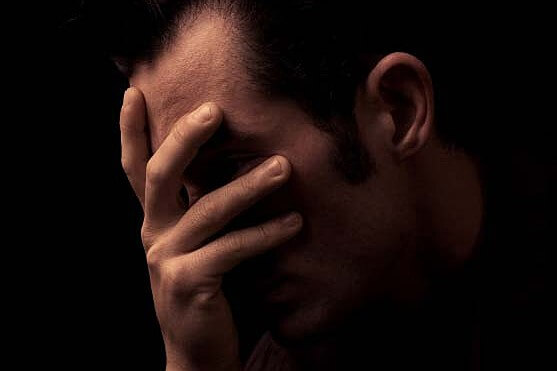Andy is a young, committed Catholic, a graduate of a strong Catholic university where he met his future wife.
They courted, married, and within two years had a baby on the way.
Despite his youth, Andy landed a mid-level management position with a
highly reputable marketing firm. He felt he was in a bit over his head,
but was grateful for the opportunity, because the pressures of
supporting his family were already weighing on him. The job was
demanding, and the hours long. One evening while working late and
playing a video game on a short break, Andy stumbled onto a porn
website, not realizing the gaming site had been a gateway to sexually
explicit websites. Within a matter of weeks, Andy was making daily
visits to chat rooms and porn web sites, mainly to relieve the stress
and anxiety of work.
He knew it was wrong and every day he resolved not to do it, but the
temptation was so strong, especially now that his wife seemed totally
wrapped up in the new baby, and had little energy to meet his emotional
needs.
What Andy didn’t realize was the
highly addictive nature of his porn activity. Even at this entry-level
porn use, he was already caught in the web of a chemical-like
dependency called the “crack cocaine of sexual addiction.”
Pornography
or cybersex addiction can progress much more rapidly than any other
chemical or behavioral addiction--the individual can become addicted in
only a matter of weeks or months. The internet has an extraordinary
capacity to introduce a trance-like state. Hours may pass while the
individual is completely preoccupied with chatting online or gazing at
pornographic images on the computer screen. This trance-like state is
the first key element in the addiction cycle, which intensifies with
each repetition. Another key element is the immediate gratification or
pleasure that results from the sexual behaviors often associated with
the viewing of pornographic materials (usually masturbation).
But,
though there are moments of intense pleasure (releasing soothing and
pleasurable hormones that are natural opioids), this self-gratification
is compulsive, associated with severe mood shifts and is often
accompanied by a feeling of powerlessness to change, self-pity,
degradation, and shame. The sense of isolation and hopelessness can be
so severe that there is only one thing that can help the user feel better….and the cycle begins again.
Secrets, Lies, and Betrayal
Relations
with his wife diminished as Andy’s addiction grew stronger. His wife
really couldn’t compete with the intriguing models (and the
increasingly deviant sexual images) he found on the internet. He began
making demands on her sexually that she was not willing to make, which
then gave him further justification in seeking solace in the computer
images. Andy’s increasing disappointment with interpersonal relations
became yet another reason to view more porn and to talk with anonymous
women online. “I do it to help my marriage,” he said.
Andy
told himself that the women in the chat rooms liked him for who he was,
without any strings attached--unlike his wife who always seemed to be
making demands on him. Andy would come home from a difficult day at
work only to be accosted by his annoyed wife, who would thrust a cranky
baby into his arms. He could barely stand to come home to the smell of
diapers, the disappointment of his wife, and the baby’s noisy
squalling. Andy couldn’t wait until he could be alone with the computer
to finally relax in an erotic haze. He became more and more isolated.
He began losing sleep as well. He was getting up in the middle of the
night to view pornography online, and this took a toll on his ability
to perform at work. Andy was soon living a double life: attending Mass
with his family, appearing to be a good Catholic husband and father,
while spending hours on the internet cruising porn sites or in chat
rooms.
Most porn addicts are trying to recreate the intoxication of young love.[4]
They feel they live in an unfair world in which bosses demand too much,
wives complain and nag, and children are ungrateful. The porn addict
tells himself that he deserves a break. The only relief he gets is from
the addiction itself—which then leaves him feeling guilty and filled
with self-loathing. These uncomfortable feelings can only be
“drowned”—not in a drink, but in the erotic haze that is said to be 30
times more powerful than cocaine.
Addictive
sexual behavior is unlike healthy sexual behavior in that it is a
compulsion for instant gratification, it is associated with severe mood
shifts (from the erotic haze to depression), is impersonal and
emotionally detached, is not fulfilling (the addict always needs more,
without feeling fulfilled), and is accompanied by negative self-worth,
shame and guilt.
In
the past, only those who chose to sneak into an adult bookstore or X
rated movie theater were able to access pornography. The risk and
ordeal of purchasing pornography kept many away. The internet changed
all that. In fact, pornography was one of the original financial
backers that transformed an obscure research project into the
information highway.
For
the porn industry, it became the perfect drug delivery
system--available 24/7 to millions of internet users right in their own
home, many of whom are children. This is called the “Triple-A engine”
of affordability, anonymity, and accessibility
driving the 57 billion dollar porn industry. Today, 4.2 million
pornographic websites are just a mouse click away. 89% of teens in chat
rooms have received unwanted solicitations of sex, and 90% of 8-16 year
olds have viewed pornography online (most while doing homework).
The Anatomy of Addiction
Patrick
Carnes, Ph.D., pioneer in the field of sexual addiction, maintains that
all sexual addicts have certain faulty, core beliefs that make them
vulnerable to addiction. They experience a fundamental lack of
self-worth and a mistrust of others that come from early childhood
experiences (whether through some traumatic incident or through
impaired early attachment experiences) and are reinforced by our
culture. The four dysfunctional core beliefs are:
1. I am a bad, unworthy person
2. Nobody would love me if they really knew me
3. My needs are never going to be met, if I have to depend on others
4. Sex is my most important need
Viewing
pornography is accompanied by self-gratification and triggers arousal,
satiation and an increase in fantasy, which induce powerful
neurochemical responses in the brain similar to those induced by
addictive drugs and alcohol. When these neurochemical changes happen
repeatedly, the responses to sexual behaviors become habituated, and
these behaviors are now “hard-wired” in the brain.[9]
Yet
this cycle repeats itself, often escalating as the user compulsively
seeks increasingly deviant websites, or even tries to live out some of
his sexual fantasies. The user may try to stop, but discovers that he
experiences anxiety, restlessness, and unease (symptoms of withdrawal).
Often the secret sin is never disclosed--until a loved one stumbles
upon his addiction, or until he loses a job, or gets caught engaging in
an illegal sexual act.
Once discovered, it
is difficult, but not impossible, to treat. The treatment requires an
integrated model of individual therapy, a self-help twelve-step group
such as Sexaholics Anonymous, and a strong spiritual program with
frequent reception of the sacraments. Our Catholic faith can combat the
faulty core beliefs of the addict, but often therapy is needed to face
the issues of the past that gave rise to the feelings of worthlessness,
fear, and mistrust. Oftentimes, there is a childhood trauma or abuse
that needs to be addressed.
There is a growing
movement to address the problem of pornography and to offer hope to
those afflicted. In his pastoral letter, “Bought with a Price,”
Bishop Paul S. Loverde outlines the nature of the offense and counters
many of the false arguments that attempt to justify pornography. Just
last week, the second largest Canadian wireless phone company pulled
their plans to sell pornography on mobile phones, after the Archbishop
of Vancouver, Raymond Roussin, urged Canadian Catholics to boycott.
If anyone is suffering from pornography addiction, a first step is to take a look at the website www.integrityrestored.com
which was developed by Catholic mental health professionals and
especially designed to help Catholics (and their families) who are
afflicted by the scourge of pornography.


